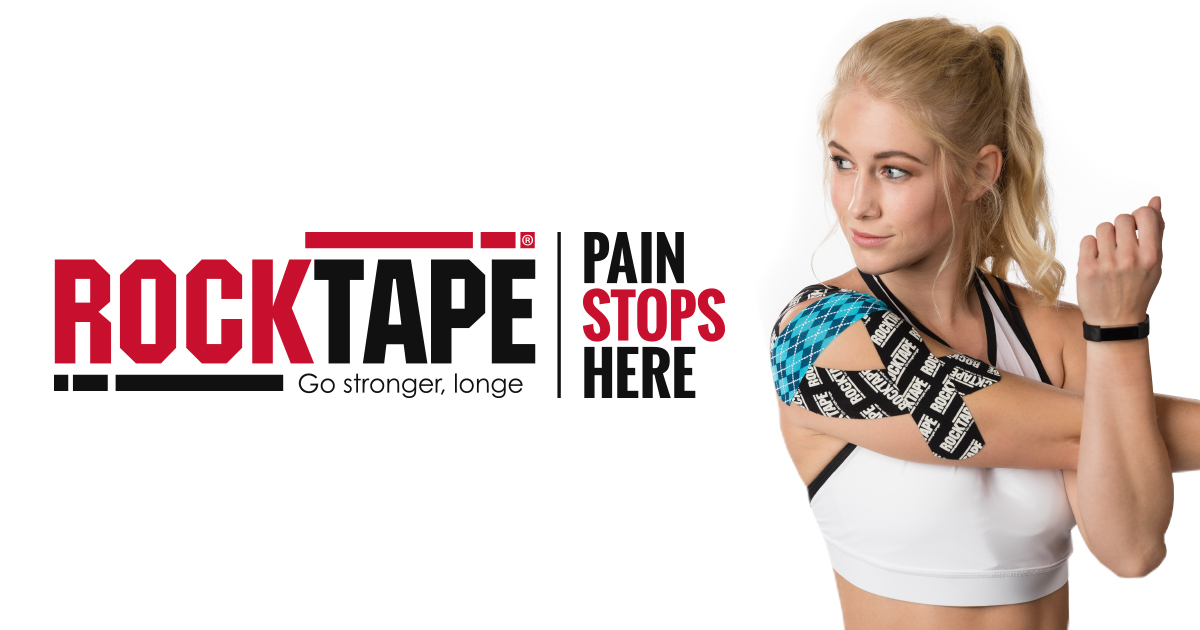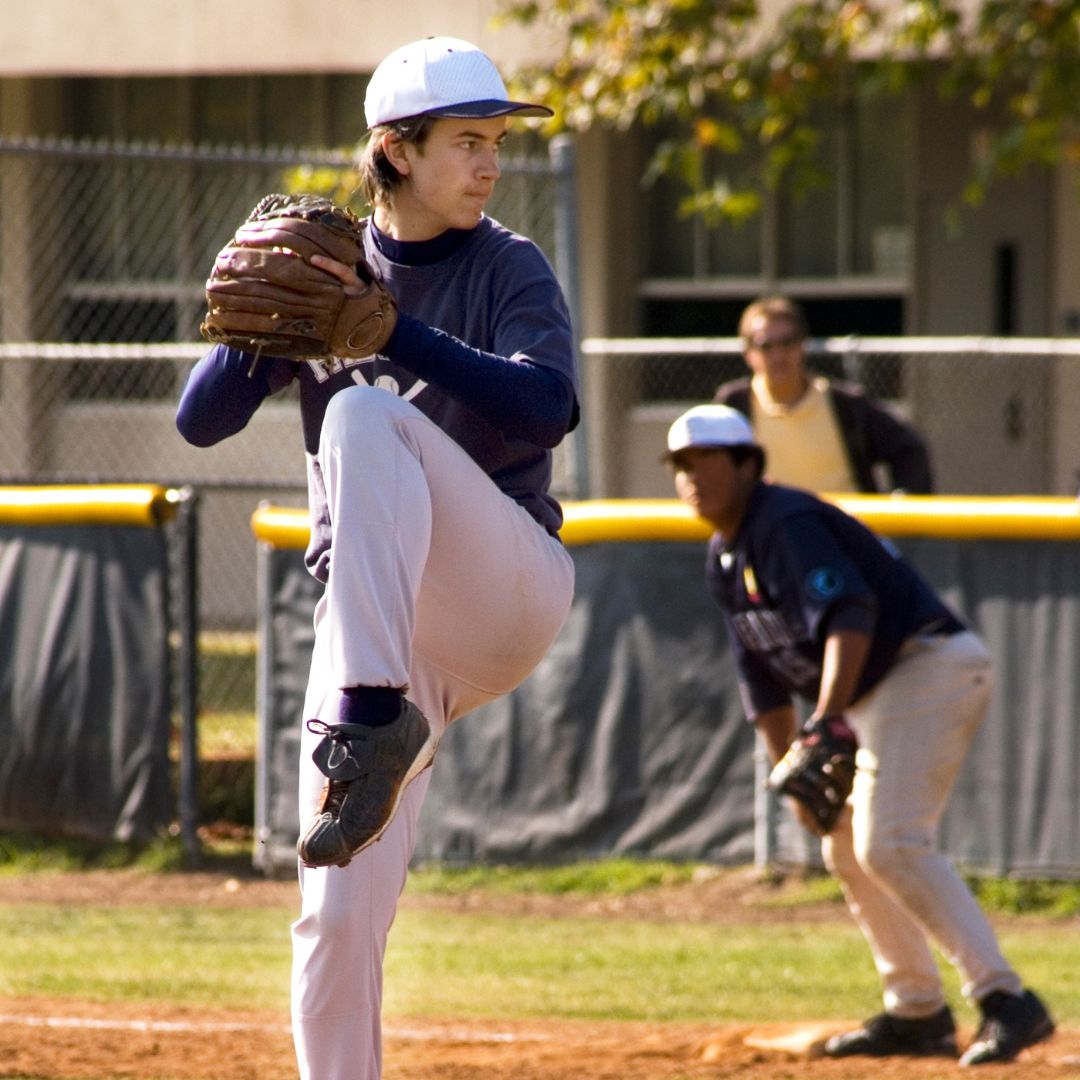What is Kinesiology tape, or Kinesiotape?
Kinesiology tape, or Ktape, is elastic tape used in the treatment of various musculoskeletal or neuromuscular impairments. It is different than the white athletic tape often seen in training rooms. Ktape is elastic and stretchy, meaning that it encourages movement rather than hindering it. Most athletes and spectators notices white athletic tape on wrists and ankles for stability and prevention of sprains. However, Ktape does not prevent movement, but improve connections up to the brain by promoting more ideal joint movements. Ktape is made with acrylic adhesive, is latex free and water resistant, meaning it is mostly hypoallergenic, comfortable and can last on the skin for several days.
What makes Rocktape® different?
Rocktape® is used by Fascial Movement Taping (FMT) providers and clinicians must complete courses to perfect their taping techniques. Rocktape® can be used for basic pain relief and swelling, as well as for performance improvement and fatigue prevention. Rocktape® providers are trained in movement screening to allow them to determine where mobility faults are stemming from to determine best course of taping treatment. It is important to note that Rocktape® and Ktape in general are not curative, but supportive interventions in the overall plan of care. Other manual techniques and corrective exercise are needed for optimal healing and recovery. Both methods of taping are performed at Block Chiropractic and Sports Physical Therapy. If you seek physical therapy in Selden, NY, our experienced team is here to help.
What are the benefits of taping?
Ktape works via several theories. For one, is supplies decompression to the skin and underlying tissues. The tape creates a greater space between the skin and the fascia/muscles that sit below it. By doing this, the tape helps relieve pressure from the receptors responsible for pain while also improving circulation. These benefits can help reduce pain and decrease swelling, respectively.
Most importantly, Ktape has great neurological benefits. Normally, our muscles and joints have receptors that provide the brain with information on light and heavy touch, discrimination, pain, temperature, pressure and proprioception (where the body is in space). Sometimes during injury, this information provided the brain can be faulty and cause poor movement patterns, further injury and/or pain or swelling. When the tape is provided, it allows proper movement while amplifying signals to be relayed to the brain, resulting in better communication. In fact, there was a study by Callaghan et al. in 2012 that showed a change in brain signals with Ktape application to the knee.
Another theory in which Ktape works is known as the pain-gate theory. Have you ever been hit with a pitch? Or banged your knee on the side of the bed? Your first reaction is to rub the area to make it feel better, right? Well, this response is known as the pain-gate theory. In simple terms, by providing your body with sensory input of rubbing (or pressure), it takes the brain’s attention away from the pain pathways. The brain is now busy responding to touch, and the sense of pain is therefore diminished.
Additionally, taping can improve fluid dynamics to decrease swelling. By decreasing the pressure from underlying structures below the skin, it promotes greater lymphatic drainage which can help reduce joint edema/effusion. By using this tape, movement is still allowed and encouraged which allows for greater pumping and drainage.
Finally, Ktape can help during athletic competition or weight lifting. It is important to note that the tape does not provide greater power or force certain movements, but it can provide the brain with amplified neurological information to help better perceive position sense and prevent fatigue. This theory is outline in greater detail in a section below. If you seek physical therapy in Smithtown, NY, our doctors are certified with use of Ktape and Rocktape.
Who can benefit from Rocktape® or Ktape?
The answer to this question is anyone! Ktape can be used in any stage of healing. It can be used for acute injuries to help improve fluid dynamics to decrease swelling. Additionally, it can be useful in sub-acute or chronic stages to decrease pain and improve movement. Our physical therapy in Smithtown, NY and physical therapy in Selden, NY can help give you the right information about Ktape and Rocktape to see if it is right for you.
The tape can take one hour to achieve full effect, and therefore should be applied an hour prior to athletic competition.
Ktape cannot be used under the following conditions:
-
- Open wounds
-
- Skin infections
-
- Active cancer
-
- Deep vein thrombosis
-
- Kidney disease
- Congestive heart failure
How is tape applied?
Depending on the goal of the tape, there are several ways the tape can be applied.
Pain taping:
When you experience pain, you often change the way you move. For example, when you sprain your ankle, you limp. By changing your movement, this predisposes you to further injury. Taping for pain is simple in that you provide “decompression” strips to the area of greatest pain, while providing one or two stabilizing strips to encourage proper movement. The stabilizing strips will run parallel the length of the area being taped with little-to-no stretch. Then, a decompression strip with 0-50% stretch will be applied perpendicular to stabilizing strips. The tape is applied with the joint at hand in the extended position. Below is an example of pain taping for the low back and knee. If you seek physical therapy in Smithtown, NY we can help with the application of Ktape or Rocktape.
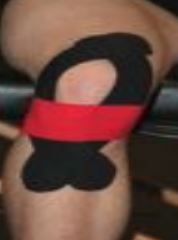
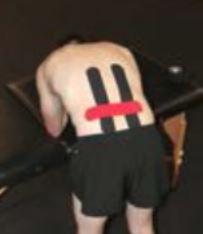
Fluid dynamics:
In order to assist the lymphatic system, the tape must be applied in a crisscrossing network, similar to basket weaving. This technique creates a decompressing effect to the swollen area. In this case, the direction of the tape is not important. The joint is again placed in a tolerated stretched position, and the tape is put on with little-to-no stretch.
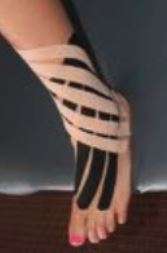

Posture:
Faulty posture is a common cause of neck, back, shoulder and/or hip pain. Correcting posture should be a main goal in the treatment of any conditions resulting in pain to these areas. There are several ways to use Ktape to improve posture. The tape can give feedback to the patient, and provide a sense that someone is pulling you into the correct posture. With the aid of physical therapy in Selden, NY we can help correct posture issues.
Below are four ways to use Ktape to improve posture. First, an X-pattern from the inferior scapula of one shoulder to the opposite lower neck can be used. Second, when the patient is found to have severely rounded shoulders, the tape can be elongated to include the front of the shoulders. Third, when your pelvis is misaligned pain can be produced in the low back or hips. When an anterior pelvic tilt is present, the provider can tape from the patients Anterior Superior Iliac Spine (ASIS) to the lower rib cage to provide a cue to posteriorly tilt. When a posterior pelvic tilt is present, tape can be applied to the patient’s Posterior Superior Iliac Spine (PSIS) to the front of the lower rib cage to help promote anterior recruitment. Finally, a common postural dysfunction found in all ages is Scoliosis. Taping can be provided depending on the direction of the curve to help relieve pain and improve muscular recruitment to help normalize curvature.
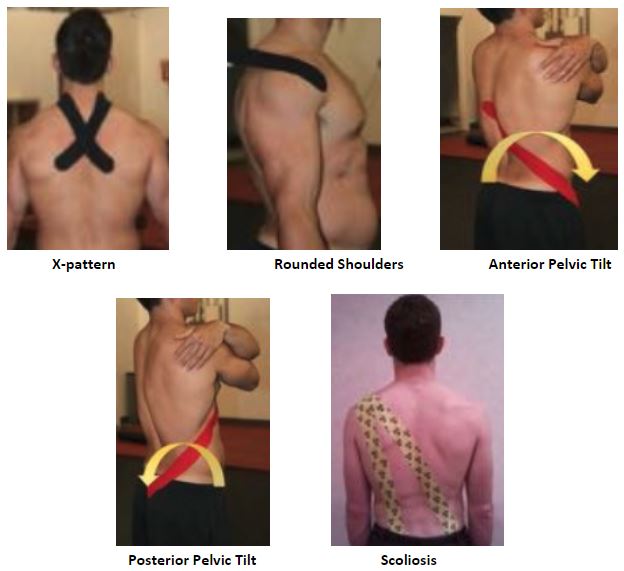
Again, I cannot stress enough that Ktape or Rocktape ® is not curative in nature. It is simply a supportive therapeutic intervention that can help relieve symptoms and promote improved muscle recruitment. Our physical therapy in Smithtown, NY can help enhance your performance and supply you with the right information you need.
Breathing:

Breathing is a very underrated process that is often overlooked in rehabilitation programs and
performance. By coordinating breathing with movement, a person can perform more efficient patterns which can carry over to improved performance. This is especially important in Cross Fit and Olympic Weight Lifting. Tape can be applied from the xiphoid process to both sides of the abdomen and across to hip to promote improved recruitment of the diaphragm and core muscles to improve breathing technique.
Nerve Entrapment:
Another common complaint in orthopedics is radicular pain. This can be felt in the arms due to thoracic outlet syndrome or cervical or thoracic nerve compression, or it can be experienced in the lower extremities from sciatic nerve entrapment. A long strip of tape can be applied from the most proximal source of pain all the way to the end of experienced symptoms to help decompress the tissues in which the nerve travels near. A provider will tape the involved extremity with the nerve in a lengthened position and the tape will have no tension.


Scar Mobility:

Decreased scar mobility can lead to pain and the
development of scar tissue which can decrease movement in near joints and structures. It is important to address scar mobility after surgical intervention or injury. In combination with other manual techniques, Ktape can improve tissue cross links to improve tissue flexibility. There are several ways to tape around a scar, depending on which direction the limitations are found. The tape at 100% tension will provide a shear force which will help soften underlying tissue. With the aid of physical therapy in Selden, NY, we can help with proper application of Ktape and Rocktape.
How can Rocktape® possibly improve performance during athletic competition?
Athletic performance is defined by the U.S. National Library of Medicine as “Carrying out a specific physical routines or procedures by one who is trained or skilled in physical activity.” In order to carry out these routines and perform at maximum capacity, an athlete must be able to move powerfully and efficiently. When movement strays away from the ideal, this is where injury, weakness and poor outcomes occur.
Our chiropractic and physical therapy providers in both our Smithtown and Selden offices are highly experienced in screening movement, which is the most important thing in treating and/or taping an athlete. The more movement you see, the more you can determine is abnormal, thus creating a better the treatment plan.
When someone moves, there are several receptors and signals activated to/from the brain. They provide the brain with information about pain, touch, pressure and body positioning. By applying Rocktape®, these signals and pathways are stimulated to a greater extent, allowing the body to better react to and control movement changes. The tape is especially effective at times of fatigue. During fatigue, the information from muscles to brain are compromised. Therefore, the addition of tape to amplify these signals would prove to be beneficial. Our physical therapy in Selden, NY or physical therapy in Smithtown, NY will help to provide necessary information about these products how it will improve your specific area of expertise.
Additionally, when to Rocktape® is applied, it can act similarly to an additional muscle. The authors of the Rocktape® course manual explain that the tape has a natural ability to stretch and recoil, just as a muscle would. Therefore, during plyometric-like activity where the muscles control movement, store energy and then release that energy – tape can augment this through its similar properties.
In order for a clinician to treat using Rocktape®, they must understand that the tape treats fascial systems, rather than isolated muscle groups. The body moves within facial patterns and functional chains, rather than isolated motions. Below are the pictures of the different fascial systems used by Rocktape® providers. The structures involved are taken directly from the Rocktape® manual.
Performance Back Chain:
Structures Involved –
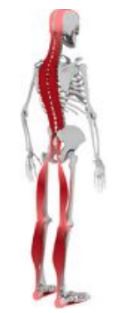
-
- Tibial tuberosity
-
- Subpatellar tendon
-
- Patella
-
- Vastus lateralis
-
- Femoral shaft
-
- Gluteus maximus
-
- Sacrum and sacral fascia
-
- Lumbodorsal fascia
-
- Latissimus dorsi
- Humeral shaft
Performance Front Chain:
Structures Involved –

-
- Linea aspera of the femur
-
- Adductor longus
-
- Pubic tubercle and symphysis
-
- Lateral sheath of the rectus abdominis
-
- Cartilage of the 5th and 6th ribs
-
- Lower edge of the pectoralis major
- Humeral shaft
Performance Lateral Chain:
Structures Involved –
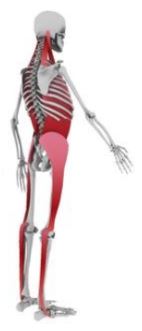
-
- 1st and 5th metatarsal bases
-
- Peroneal muscles
-
- Lateral compartment of the leg
-
- Lateral tibial condyle
-
- Iliotibial band
-
- Abductor muscles of the hip
-
- Tensor fascia lata and gluteus maximus
-
- Iliac crest, anterior superior iliac spine and posterior superior iliac spine
-
- Lateral abdominal obliques
-
- Ribs and internal/external intercostal muscles
-
- Splenius capitis
-
- Sternocleidomastoid
- Occipital ridge and mastoid process
Above are the three main chains involved. In addition to these, you can a performance functional chain, core chain, upper extremity chains, and spiral chains.

Based off of movement screens and determining which fascial systems (from above) are at fault, the providers can determine which areas to tape on the athlete. Below are some images of possible taping techniques used in performance:
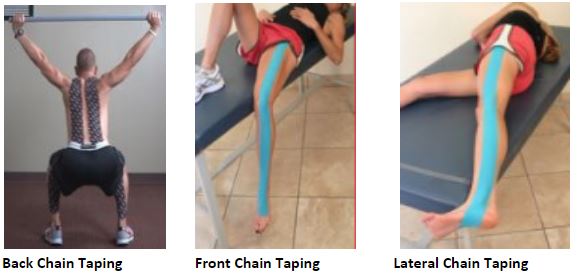
Examples of sports-specific application:
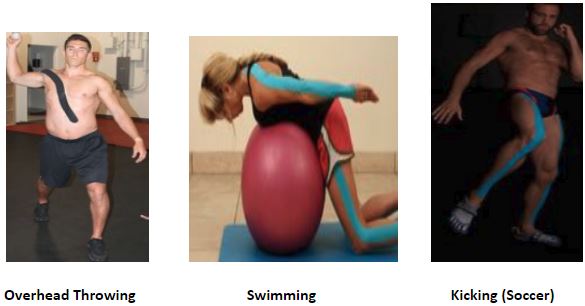
Things to know after application:
-
- The tape is water resistant, meaning you can shower with tape on. However, it is important to pat the tape dry, rather than wipe it. Also, the tape may feel wet for 15-20min afterward. DO NOT BLOW DRY to speed up drying process, this can lead to burns.
-
- The way the tape is made allows for it to stay on for 3-5 days after application. If used for swelling/edema, tape may be reapplied daily.
-
- Rocktape ® is typically safe, however, if irritation occurs please remove immediately. Irritation from the tape is typically caused by poor application rather than the tape material itself and may need to be re-taped to be more comfortable.
- If residue remains on skin, baby oil is successful in removing.
Evidence-Based Practice:
Our providers in our Smithtown and Selden offices do not guarantee that Rocktape® is appropriate for everyone. Even when the application of kinesiotape is called for, it may not provide the benefits expected. Patients react differently to the tape and therefore, we cannot promise the advantages of Rocktape® will be experienced by everyone it is applied to.
That being said, research has conflicting support in regards to use of kinesiology tape.
Support:
- Kim et al. (2015) found kinesiology taping to be an effective treatment for chronic ankle instability.
- Kaya et al. (2010) found kinesiotaping to be a possible treatment option for shoulder impingement. In this study, they found lower pain ratings and outcome measure scores in those supplied with tape when compared to control group.
- Greenstein et al. (2017) found a significant decrease in pain with using kinesiotape following a cervical manipulation when compared to a control group.
- Castrogiovanni et al. (2016) found exercise in combination with kinesiotape helped decrease pain and improve functional movement in patients suffering from knee osteoarthritis.
- Ahn et al. (2015) found an increase in quadriceps torque and performance testing results when kinesiology tape was provided to fatigued muscles. This indicates possible benefits of decreasing the effects of fatigue.
No Benefit:
-
- De Freitas et al. (2018) found no increase in quad recruitment or force generation with the application of Ktape.
-
- Wilson et al. (2016) reports no difference in balance or function with Ktape use.
- A systematic review by Parriera et al. (2014) looked at several articles tackling the use of Ktape and found that research at this time does not support the use of Ktape orthopedic injury.
It is important to note that there are several other articles that both support and discourage use of kinesiotape. It is up to the professional to decide the correct interventions for each patient.
Sources:
Callaghan MJ, McKie S, Richardson P, Oldham JA. Effects of patellar taping on brain activity during knee joint proprioception tests using functional magnetic resonance imaging. Phys Ther. 2012; 92(6): 821-830.
Castrogiovanni P, Di Giunta A, Guglielmino C, et al. The effects of exercise and kinesio tape on physical limitations in patients with knee osteoarthritis. J Funct Morphol Kinesiol. 2016; 1: 355-368.
De Freitas FS, Brown LE, Gomes WA, Behm DG, Marchetti PH. No effect of kinesiology tape on passive tension, strength or quadriceps muscle activation of during maximal voluntary isometric contractions in resistance trained men. Int J Sports Phys Ther. 2018; 13(4): 661-667.
Greenstein J, McNamara T, Bishop B, Etnoyer-Slaski J, Topp R. The effect of kinesiology tape on pain and neck range of motion after cervical manipulation. J Perform Health Res. 2017; 1(1): 18-25.
Kaya E, Zinnuroglu M, Tugcu I. Kinesio taping compared to physical therapy modalities for the treatment of shoulder impingement syndrome. Clin Rheumatol. 2011; 30(3): 201-207.
Kim BJ, Lee JH, Kim CT, Lee SM. Effects of ankle balance taping with kinesiology tape for a patient with chronic ankle instability. J Phys Ther Sci. 2015; 27: 2405-2406.
Lee K, Yi CW, Lee S. The effects of kinesiology taping therapy on degenerative knee arthritis patients’ pain, function and joint range of motion. J Phys Ther Sci. 2016; 28: 63-66.
Parreira PdCS, Costa LdCM, Hespanhol Junior LC, Lopes AD, Costa LOP. Current evidence does not support the use of Kinesio taping in clinical practice: a systematic review. J Physiother. 2014; 60(1): 31-39.
Wilson V, Douris P, Fukuroku T, Kuzniewski M, Dias J, Figueiredo P. The immediate and long-term effects of kinesiotape ® on balance and functional performance. Int J Sports Phys Ther. 2016; 11(2): 247-253.
ALL IMAGES WERE TAKEN WITH PERMISSION DIRECTLY FROM ROCKTAPE® BASIC AND PERFORMANCE MANUAL

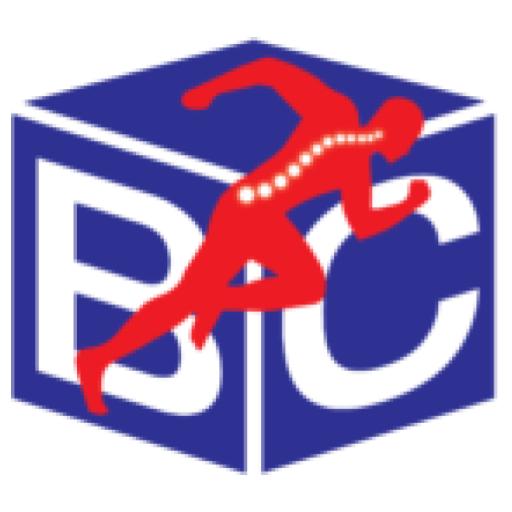
Telephone No.(631) 543-0004

